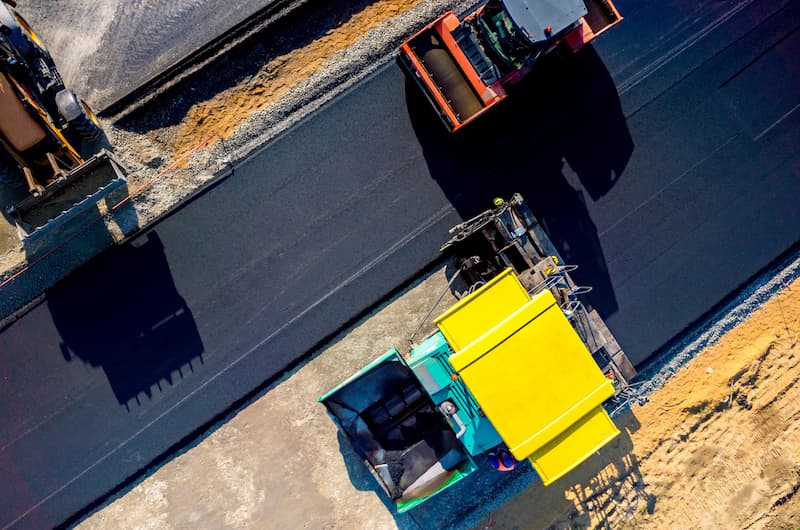How A1 Professional Asphalt & Sealing Llc can Save You Time, Stress, and Money.
How A1 Professional Asphalt & Sealing Llc can Save You Time, Stress, and Money.
Blog Article
The Single Strategy To Use For A1 Professional Asphalt & Sealing Llc
Table of ContentsA Biased View of A1 Professional Asphalt & Sealing LlcThe 6-Minute Rule for A1 Professional Asphalt & Sealing LlcThe Single Strategy To Use For A1 Professional Asphalt & Sealing Llc4 Easy Facts About A1 Professional Asphalt & Sealing Llc ExplainedGetting The A1 Professional Asphalt & Sealing Llc To Work

The oil in an auto engine is not just oil. It contains a range of additives to enhance the car's efficiency. These consist of polymers, viscosity modifiers, warmth stabilizers, added lubricating substances, and use additives. The REOB includes all the additives that were in the waste oil in addition to the wear metals from the engine (primarily iron and copper).
Nevertheless, by making several blends making use of different REOB samples and different asphalt binders, the variants mostly can be averaged out. A number of States offered examples of known REOB composition to TFHRC researchers, that evaluated the examples to contrast the percent of added (known) REOB to the found (checked) quantity. The evaluations showed a similar portion of included and found REOB.
The Basic Principles Of A1 Professional Asphalt & Sealing Llc
They got a frustrating feedback. The TFHRC researchers analyzed 1,532 examples from 40 States, one Canadian district, and 2 Federal Lands Highway departments. They assessed each example twiceamounting to more than 3,000 evaluations. None of those States recognized that the asphalt they were purchasing contained REOB. One State urged its samples had no REOB.
Of the 1,532 examples checked, 12 percent had REOB, and some included considerably high degrees of it at 1020 percent. The greatest degree was 34 percent in a sample from Texas, which TxDOT had utilized in a patching substance. This screening likewise revealed the existence of phosphoric acid in 11 percent of the samples, and 2 percent consisted of ground tire rubber.
Two years back at TRB's yearly meeting, the Federal scientists held an REOB workshop and presented the searchings for of their laboratory assessments to a standing room-only crowd. Some companies do not specifically ban REOB, they do enforce physical examinations that avert its useeffectively a restriction. Others do not ban it by requirements, yet have arrangements with asphalt providers to avoid using REOB
The Only Guide for A1 Professional Asphalt & Sealing Llc
A handful do permit REOB, some within specific limits. As an example, Ohio and Texas restriction levels to less than 5 percent of the asphalt. To develop a reputable examination approach that all States can use, the TFHRC scientists established a round-robin examination strategy. The individuals are 11 State highway firms (Illinois, Massachusetts, Minnesota, Mississippi, Montana, North Carolina, Oklahoma, South Carolina, Texas, Vermont, and Wyoming), 2 independent testing labs, the Ministry of Transport in Ontario, Queen's College in Ontario, and an Ontario paving specialist.
The participants are examining the samples independently making use of the standards provided by the TFHRC researchers. The output will be a recommended AASHTO examination approach that any type of State can take on and utilize.
The sidewalk with REOB, which lies 0.6 mile (1 kilometer) from the sidewalk without REOB, has similar subgrade, web traffic thickness, and climate. Nonetheless, the segment of Highway655 with 5 to 10 percent REOB revealed considerable fracturing. In this instance, the existence of REOB was the determined reason of splitting at a low temperatures.
"In our experience in Canada, also little quantities of 23 percent can be an issue." Similarly, a section of test pavement in Minnesota (MN1-4) discovered to have REOB likewise broke prematurely. The pavement performed well for the first 3 to 4 years, yet then started to split. This sidewalk is likewise subject to reduced temperatures.
Some Of A1 Professional Asphalt & Sealing Llc
The examinations were not extensive, yet they revealed that at degrees of 6 percent or more, the tensile toughness of the asphalt dropped substantially. At a degree of 3.5 percent REOB, the variation in the physical examination approaches was more than the result of REOB. As a matter of fact, it was difficult for researchers to assess whether REOB existed.

One binder criterion thought about is the difference between the reduced temperature level important spec temperature level for tightness (S) in the bending beam of light rheometer and the flexing beam rheometer creep slope (m-value) noted as Tcritical. TC = TC (S) TC (m-value). Assessment of this specification is still continuous. 2 independent research study teams, explanation one from AASHTO and the various other from the Asphalt Institute, concluded that even more research is needed on the use of REOB in asphalt.
Previously, all asphalt testing measured engineering residential or commercial properties such as tightness. These tests do not reveal what products had been added to the asphalt.

Fascination About A1 Professional Asphalt & Sealing Llc
These results show there are weak points in the standardized engineering testing protocols that may be manipulated. The producer may have an economic benefit and the product passes all the standardized examinations, but the item might not be valuable to making sure long-lasting performance. To address this concern and the growth of brand-new asphalt ingredients and extenders, TFHRC is beginning a research study program to utilize handheld spectroscopic gadgets, x-ray fluorescence spectroscopy, and Fourier change infrared spectroscopy to allow evaluations to be carried out in the field as opposed to having to take examples back to the laboratory.
Report this page